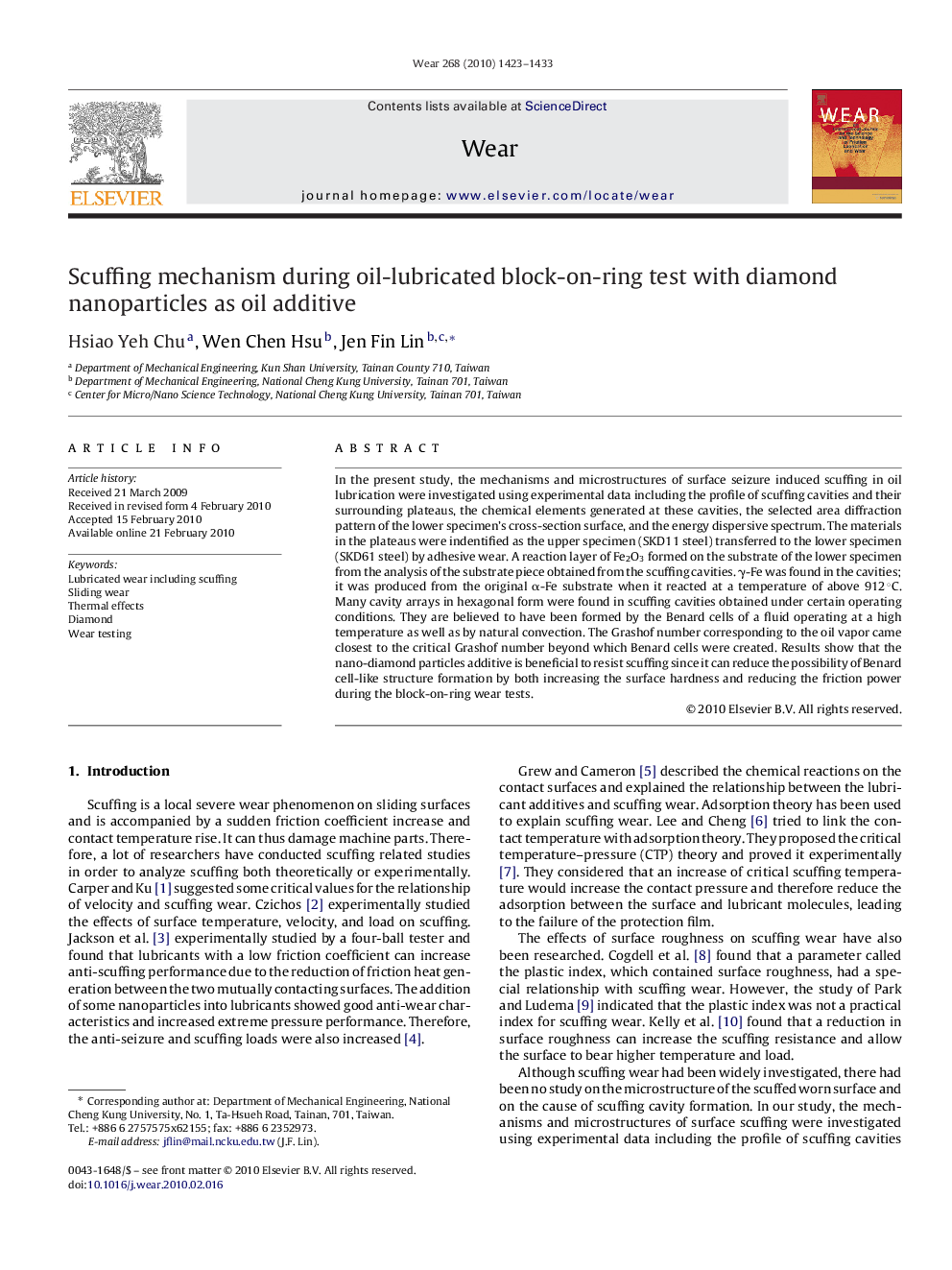| Article ID | Journal | Published Year | Pages | File Type |
|---|---|---|---|---|
| 618332 | Wear | 2010 | 11 Pages |
In the present study, the mechanisms and microstructures of surface seizure induced scuffing in oil lubrication were investigated using experimental data including the profile of scuffing cavities and their surrounding plateaus, the chemical elements generated at these cavities, the selected area diffraction pattern of the lower specimen's cross-section surface, and the energy dispersive spectrum. The materials in the plateaus were indentified as the upper specimen (SKD11 steel) transferred to the lower specimen (SKD61 steel) by adhesive wear. A reaction layer of Fe2O3 formed on the substrate of the lower specimen from the analysis of the substrate piece obtained from the scuffing cavities. γ-Fe was found in the cavities; it was produced from the original α-Fe substrate when it reacted at a temperature of above 912 °C. Many cavity arrays in hexagonal form were found in scuffing cavities obtained under certain operating conditions. They are believed to have been formed by the Benard cells of a fluid operating at a high temperature as well as by natural convection. The Grashof number corresponding to the oil vapor came closest to the critical Grashof number beyond which Benard cells were created. Results show that the nano-diamond particles additive is beneficial to resist scuffing since it can reduce the possibility of Benard cell-like structure formation by both increasing the surface hardness and reducing the friction power during the block-on-ring wear tests.
